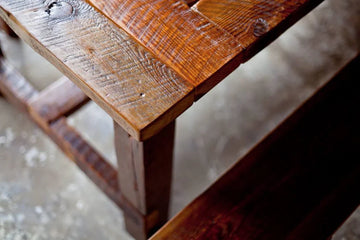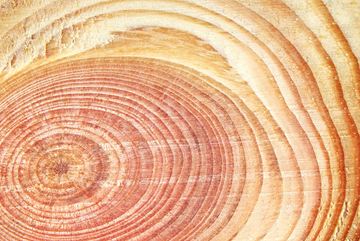When we think of furniture and home décor, many of us are conditioned to look for perfection—straight lines, flawless finishes, and uniform patterns. But nature doesn't do perfect. Nature does character. And nowhere is that more beautifully visible than in the quirks of real wood—knots, cracks, grains, and all.
In the world of handcrafted, reclaimed, and rustic wooden furniture, those imperfections aren’t flaws—they’re the soul of the piece.
The Story Behind the Wood
Every knot tells a story. Every crack is a timeline. Every swirling grain is a natural fingerprint. These so-called "imperfections" are what make a handcrafted wooden piece feel personal and alive.
Unlike mass-produced furniture that hides behind veneers or synthetic laminates, real wood carries its past proudly. That twisted grain? It grew in response to wind. That knot? It once anchored a branch that reached for sunlight. That fine crack along the surface? It’s the result of natural aging, of the wood breathing and living even after it’s been shaped into a table, shelf, or bench.
Wood, especially when reclaimed, is a silent storyteller—one that brings warmth, history, and authenticity into our homes.
Why Imperfection Feels So Right at Home
Have you ever noticed how a room with natural wood feels instantly more grounding? More comfortable? That’s not an accident. Wood connects us to the outdoors, to our roots, and to things made with patience and purpose.
There’s a deep human satisfaction in knowing that no one else owns a piece quite like yours. Two rustic shelves made from the same beam of reclaimed wood will never look identical. That unique grain pattern or natural dent isn’t a defect—it’s a signature.
In today’s world of filters and factory finishes, there’s something genuinely comforting about living with materials that haven’t been polished into anonymity.
Crafted by Nature, Honed by Hand
When artisans work with reclaimed or sustainably sourced wood, they don’t erase its past—they highlight it. Skilled hands will oil, sand, and wax the surface in a way that enhances every mark, not hides it.
Take, for example, a Rustic Side Table made from Reclaimed Wood—it doesn’t scream for attention, but it instantly adds soul to a room. Whether it's placed beside your favorite reading chair or used as a nightstand, it becomes a focal point not because it's perfect, but because it's real.
And then there’s the Handmade Solid Oak Charcuterie Board—a piece so simple in purpose, yet so stunning in execution. You can see the oak’s story through its grains, its softness under waxed fingers. Whether you’re serving cheese or just displaying it as kitchen art, it quietly whispers elegance in its most natural form.
Designing Around Imperfection
So how do you style these unique, character-rich pieces in your space?
Contrast with Soft Textures: Mix wood with linen throws, jute rugs, and plush cushions to create a warm, layered look.
Lean Into Earth Tones: Match the wood’s natural hues with calming greens, stone greys, and warm creams.
Let the Piece Breathe: Don’t crowd it. Give your wooden furniture room to shine. A console table with a delicate crack or uneven edge deserves to be seen, not hidden between clutter.
Go Minimal on the Polish: Choose oil-finished or matte-sealed wood over glossy varnishes to let the character show through.
Mindful Living, One Piece at a Time
When we embrace imperfection in our homes, we’re doing more than just decorating—we're shifting our mindset. We're choosing authenticity over artificiality. We’re learning to slow down, to appreciate craftsmanship, to see the beauty in things that take time.
A knot in a shelf isn't just a mark—it's a meditation. A crack isn't damage—it's depth. And a swirl in the grain isn’t random—it’s the wood remembering where it came from.
In that way, wood teaches us about life: about resilience, growth, and the stories written into us by time.
Conclusion: Why It Matters
In a home filled with pieces that carry history and handwork, we start to feel more at home ourselves. There’s something deeply grounding about living with materials that reflect the natural world. Wood—with all its quirks and character—isn’t just décor. It’s a conversation. A memory. A mood.
And when you run your fingers over a groove or a ridge, when you notice the way light catches an uneven grain—remember that beauty doesn’t live in the flawless. It lives in the real.
So next time you spot a knot, a crack, or a swirl in your wooden furniture, don’t see it as a blemish. See it as a reminder: perfect isn't the goal—connection is.







